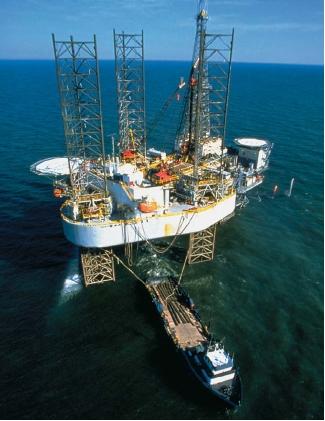Natural gas

Natural gas is a fossil fuel. Most scientists believe natural gas was created by the same forces that formed oil, another fossil fuel. In prehistoric times, much of Earth was covered by water containing billions of tiny plants and animals that died and accumulated on ocean floors. Over the ages, sand and mud also drifted down to the ocean floor. As these layers piled up over millions of years, their weight created pressure and heat that changed the decaying organic material into oil and gas. In many places, solid rock formed above the oil and gas, trapping it in reservoirs.
Natural gas consists mainly of methane, the simplest hydrocarbon (organic compound that contains only carbon and hydrogen). It also contains small amounts of heavier, more complex hydrocarbons such as ethane, butane, and propane. Some natural gas includes impurities such as hydrogen sulfide ("sour" gas), carbon dioxide ("acid" gas), and water ("wet" gas). During processing, impurities are removed and valuable hydrocarbons are extracted. Sulfur and carbon dioxide are sometimes recovered and sold as by-products. Propane and butane are usually liquified under pressure and sold separately as LPG (liquified petroleum gas).
History of the discovery and use of natural gas
Natural gas is believed to have been first discovered and used by the Chinese, perhaps as early as 1000 B.C. Shallow stores of natural gas were released from just beneath the ground and piped short distances to be used as a fuel source. Natural gas provided a continuous source of energy for flames. These "eternal fires" were found in temples and also used as attractions for visitors.
In 1821, an American gunsmith named William Aaron Hart drilled the first natural gas well in the United States. (To extract natural gas from the ground, a well must be drilled to penetrate the cap rock that covers it.) It was covered with a large barrel, and the gas was directed through wooden pipes that were replaced a few years later with lead pipe.
In the early 1900s, huge amounts of natural gas were found in Texas and Oklahoma, and in the 1920s modern seamless steel pipe was introduced.

An offshore natural gas drilling platform. (Reproduced by permission of
The Stock Market
.)
The strength of this new pipe, which could be welded into long sections, allowed gas to be carried under higher pressures and, thus, in greater quantities. For the first time, natural gas transportation became profitable, and the American pipeline network grew tremendously through the 1930s and 1940s. By 1950, almost 300,000 miles (482,700 kilometers) of gas pipeline had been laid—a length greater than existing oil pipes.
Natural gas now supplies more than one-fourth of all energy consumed in America. In homes, natural gas is used in furnaces, stoves, water heaters, clothes dryers, and other appliances. The fuel also supplies energy for numerous industrial processes and provides raw materials for making many products that we use every day.
Natural gas and the environment
In light of environmental concerns, natural gas has begun to be reconsidered as a fuel for generating electricity. Natural gas is the cleanest burning fossil fuel, producing mostly just water vapor and carbon dioxide as by-products. Several gas power generation technologies have been advanced over the years, including a process that uses the principles of electrogasdynamics (EGD).
Words to Know
Fossil fuel: Fuels formed by decaying plants and animals on the ocean floor that were covered by layers of sand and mud. Over millions of years, the layers of sediment created pressure and heat that helped bacteria change the decaying organic material into oil and gas.
Hydrocarbons: Molecules composed solely of hydrogen and carbon atoms.
